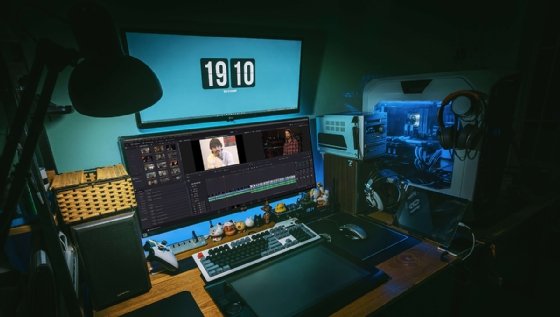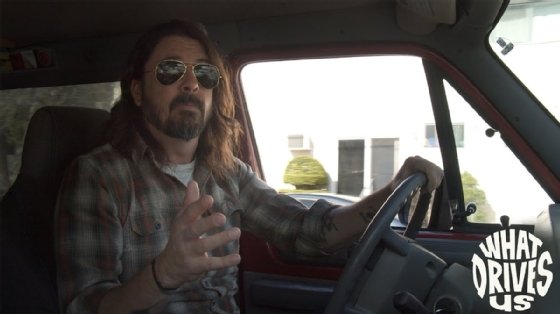
ververidis - stock.adobe.com
OpenDrives key to remote editing of Dave Grohl documentary
Jim Rota and Dean Gonzalez lacked high-performance storage needed to make and edit their new music documentary, so they turned to a vendor born out of Hollywood movie-making.
When Jim Rota and Dean Gonzalez looked to edit the new music documentary "What Drives Us" by Foo Fighters frontman Dave Grohl, they ran into two issues: COVID-19 and finding storage that could support remote editing.
Once filming wrapped, Gonzalez, film editor, had 54 TB of data to work through, which included video interviews, B-roll and roughly 1,000 photographs documenting the van-touring lifestyle of rock stars. But the post-production team didn't have storage with high enough throughput to handle parts of the editing process, such as playback and review, scene editing and sequencing. Due to COVID-19 pandemic mandates, teams had to work from home, and so the storage used to edit the documentary needed to be easily accessed remotely as well.
Rota, senior director of film and series workflow at Blackmagic Design, and Gonzalez eventually turned to OpenDrives, an enterprise-grade NAS storage vendor with a specific focus on filmmaking.
A resolve for everything
Rota and Gonzalez decided to use the same editing software for the entire post-production process, using Blackmagic Design's DaVinci Resolve 17, generally released February 2021. The decision, partially motivated by Rota's position at Blackmagic Design, runs counter to how the post-production process traditionally operates, according to Rota.
Resolve enables editors to use the same platform for all post-production processes, including editing, compositing multiple images into a single image, adding visual effects, mixing sound and correcting color for consistency, Rota said. Unlike other post-production programs, video files can be transferred straight from the camera storage card to a workstation to a Resolve editing interface without having to change the video format, he added.
Gonzalez said he used his MacBook Pro to edit the film using Resolve, as the editing platform doesn't require extensive compute power and he was working from home due to COVID-19 restrictions.

The ease of use and ease of access were a boon for editing, but the software presented a storage challenge because it had to be able to "keep up with Dean's fingers and eyeballs," Rota said.
The right tools at the right time, or the wrong time
Rota and Gonzalez first looked at AWS FSx, the hyperscaler's high-performance file system, as they were already using AWS for another project, Rota said. But the editing team found AWS FSx to have too many variables to contend with at that point in the filmmaking process, although Gonzalez noted that the AWS FSx performance felt similar to OpenDrives.
Rota had a partner who completed post-production for a sports drama film using OpenDrives, which prompted him to reach out to the company.
OpenDrives was born out of the movie-making industry to solve complex high-resolution video problems, specifically uncompressed media manipulation. The vendor manufactures high-performance NAS, which uses Ethernet and standard open protocols, making it compatible with operating systems via network file system (NFS) and server message block (SMB) file protocols, according to OpenDrives.
With OpenDrives, a user can edit and finish a film in high-resolution formats, removing steps from the process such as compression to shrink files for transfer or transcoding to change the file format for the storage.
OpenDrives works with the customer to determine performance metrics and the I/O profile of the workflow, according to James DiVito, director of solutions services at the company.
In Rota's and Gonzalez's case, the vendor recommended its Optimum platform, which is a hybrid NAS system combining NVMe flash storage and HDDs, according to Sean Lee, chief strategy and operations officer at OpenDrives. All requests go into RAM before getting staged to NVMe; when needed, data is pulled back from the NVMe instead of the HDDs, Lee said. The spinning disks are used for data that editors no longer need quick access to but may need later in the process.

The hardware was located at the OpenDrives office in Culver City, Calif., as well as three high-performance HP Z workstations for editing, which were equipped with Teradici remote software to boost virtual desktop performance. OpenDrives' Atlas software was also used to boost performance. Instead of monitoring traditional I/O patterns for caching, Atlas uses an algorithm that considers frequent and recent data sets for faster response times, in a process the vendor calls in-line caching.
On top of the hardware, the vendor offered its OpenDrives Anywhere, a private cloud that enabled remote data access.
"OpenDrives Anywhere [is] specifically designed to do the job we're talking about," Rota said.
The process
The data storage cards come directly off the camera and are shipped to OpenDrives' on-premises storage facility in Culver City, Rota said. Once the cards are loaded onto OpenDrives Optimum, Gonzalez and his team can access the data remotely and begin post-production work.
The post-production team shaved about three to four months off the editing process, due to a combination of a single editing program software and OpenDrives, which supplied up to 3.6 GBps speed to each workstation and enabled editors to skip the converting and transcoding steps, saving on time, Lee said.
For Rota, the speed OpenDrives provided was critical. "You need storage that's not only fast but can keep up with people like Dean hammering on it all day," he said.
He added, however, that OpenDrives tools may be harder for employees unfamiliar with the technology to use.
"[OpenDrives] is not an out of the box and go kind of thing," he said.
Movie-making methods evolve
Gonzalez noted that he had to update his equipment and network connection to pull off the remote editing, so it wasn't as simple as using what was on hand. For instance, he upgraded to a 10 GbE connection for remote editing.
But internet speeds are improving, opening the door to data-intensive remote work like film editing, he said. Plus, working from home provides certain benefits such as opening jobs up to more people and less travel, he said.
Rota, too, said he believes working remotely is the way forward for post-production work, and technology like OpenDrives helps make it possible. It is "bulletproof" as far as the speeds users get, and its storage can handle the processing needed to make the film, he said.
"What Drives Us," which includes interviews with Ringo Starr, The Edge, Lars Ulrich and St. Vincent, among others, is available now on Amazon Prime with a Coda Collection subscription.
The report includes information from an interview done last summer by former TechTarget senior news writer Carol Sliwa, now an analyst at IDC.







